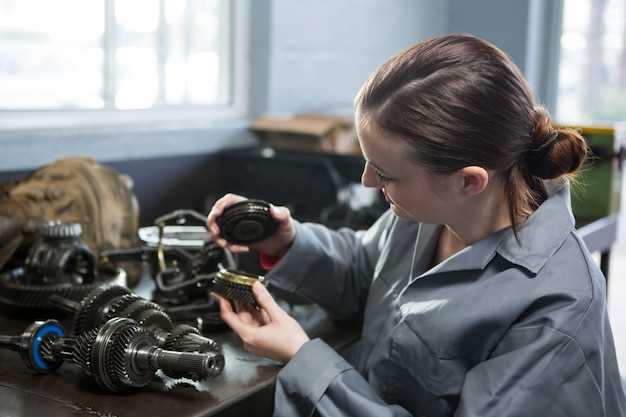
Restoring a classic vehicle is a journey filled with excitement and challenges. Every project carries with it a unique story, and documenting progress is crucial for ensuring that each phase is completed efficiently. Accurate tracking allows restorers to appreciate the small wins and examine the setbacks, making it easier to navigate the complexities of vintage car refurbishment.
Setting clear milestones is instrumental in maintaining focus and motivation throughout the restoration process. These milestones act as benchmarks that guide restorers in evaluating their work and planning their next steps. Whether it’s securing the necessary parts, completing bodywork, or reassembling intricate components, reaching these critical points provides a sense of achievement and clarity in a project often filled with uncertainty.
Regularly generated reports play an essential role in tracking progress. By documenting accomplishments and setbacks, restorers can keep a comprehensive record of their journey, which aids in troubleshooting issues as they arise. This systematic approach not only enhances the overall efficiency of the restoration but also helps in sharing experiences with fellow enthusiasts, creating a community built on collective knowledge and passion.
Setting Clear Project Milestones for Restoration Stages

Establishing clear project milestones is essential for tracking progress in classic vehicle restoration projects. Milestones act as checkpoints that allow restoration teams and enthusiasts to assess their achievements and make necessary adjustments. By defining specific, measurable goals, teams can create a detailed timeline that guides the entire restoration process.
Each stage of the restoration should have its own unique milestones. For instance, the initial phase may focus on disassembly and evaluation, while subsequent stages could include parts procurement, bodywork, and mechanical overhaul. Documenting these milestones in structured reports helps in tracking progress and ensuring that no critical step is overlooked.
Regularly reviewing these milestones not only provides motivation but also helps in identifying any deviations from the plan. If a project falls behind schedule, teams can analyze the reports, pinpoint the issues, and implement corrective measures. Furthermore, setting ambitious yet realistic milestones encourages teams to stay committed and focused throughout the restoration journey.
Finally, sharing progress reports with stakeholders, including enthusiasts and potential buyers, can foster transparency and accountability. This practice not only highlights achievements but also showcases the dedication invested in bringing a classic vehicle back to life. In conclusion, clear milestones are indispensable for ensuring that a restoration project remains on track and meets its ultimate goals.
Creating Detailed Progress Reports for Stakeholder Updates

Maintaining transparency in classic vehicle restoration projects is essential for ensuring all stakeholders are informed and engaged. One of the most effective ways to achieve this is by creating detailed progress reports that highlight key elements such as timelines, milestones, and overall progress.
When crafting these reports, it’s important to outline specific milestones achieved during the project. This could include major tasks such as the completion of bodywork, engine restoration, or interior refurbishing. Each milestone should be accompanied by a brief description outlining the significance of the achievement and how it contributes to the project’s overall success.
Additionally, incorporating visual elements like charts or photographs can enhance understanding by providing a clear view of the project’s evolution. This helps stakeholders visualize progress and appreciate the craftsmanship involved in the restoration process.
Regularly scheduled updates are crucial in keeping stakeholders informed about the ongoing progress. These updates can be weekly or bi-weekly, depending on the scale of the project. Each report should summarize accomplishments since the last update and outline any challenges faced, along with the strategies implemented to overcome them.
Furthermore, it’s beneficial to set clear expectations regarding forthcoming milestones. Stakeholders should be made aware of the objectives for the next reporting period, allowing them to track the project’s trajectory more effectively. This proactive approach helps in fostering trust and collaboration among all participants.
In summary, detailed progress reports are vital for successful communication with stakeholders in classic vehicle restoration projects. By focusing on milestones, providing visual contextualization, and maintaining regular updates, project managers can ensure a comprehensive understanding of the project’s progress and maintain stakeholder confidence throughout the restoration journey.
Assessing Challenges and Adjusting Timelines During Restoration
Restoring classic vehicles is a rewarding yet complex project that often presents unforeseen challenges. A thorough assessment of these obstacles is crucial for maintaining momentum and ensuring successful outcomes. Identifying potential difficulties early in the restoration process allows for proactive planning, which can mitigate delays and keep the project on track.
Common challenges may include mechanical issues, sourcing rare parts, or even unexpected rust damage. Documenting these hurdles as they arise is essential for adjusting timelines effectively. Keeping a log of milestones achieved and setbacks encountered provides clarity, allowing you to reevaluate project priorities and reallocate resources if necessary.
Additionally, flexibility in scheduling is vital. As new information surfaces during restoration, timelines require adjustments. Regularly communicating changes with team members or stakeholders ensures everyone remains aligned and responsive to the project’s needs.
Setting realistic milestones based on the assessed challenges will aid in measuring progress. If specific tasks are taking longer than expected, breaking them down into smaller, manageable components can alleviate pressure and keep the project moving forward.
Ultimately, a successful restoration hinges on the ability to adapt to obstacles while remaining focused on the long-term goals. By continuously assessing challenges and adjusting timelines accordingly, the restoration journey can lead to a beautifully revitalized classic vehicle that reflects the passion and dedication of its restorer.




